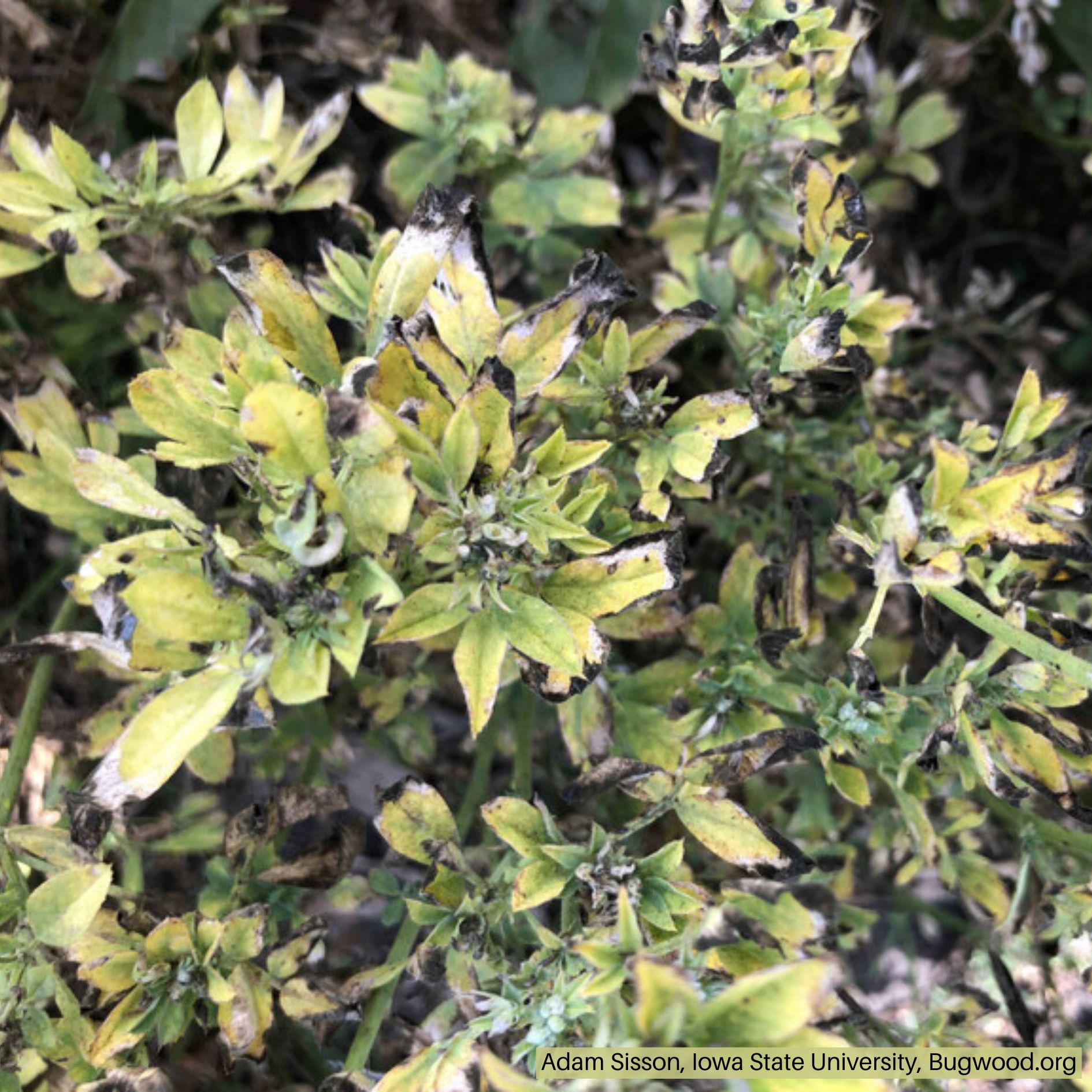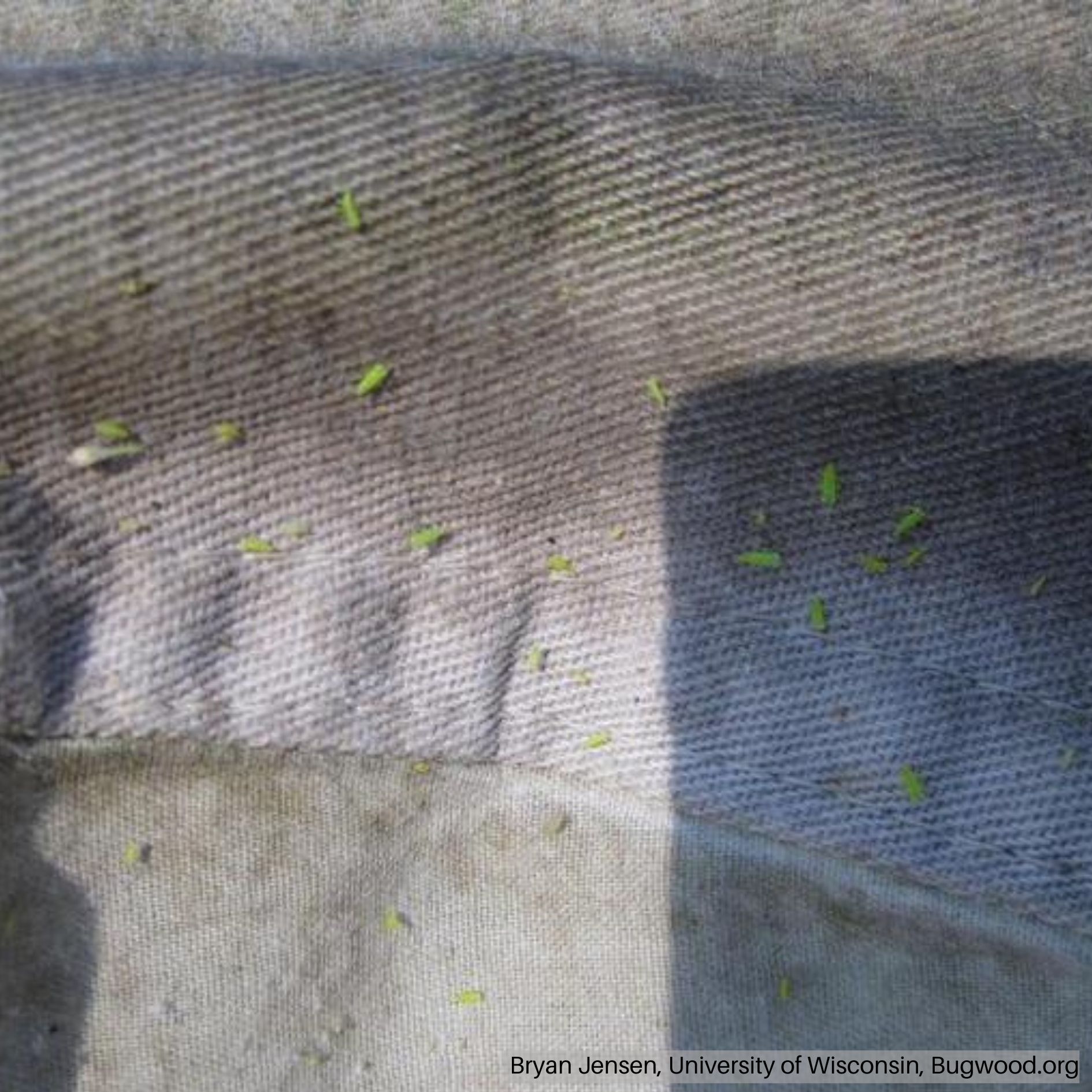Potato Leafhopper
HOSTS
- Alfalfa
- Legumes
- Potato
- Solanaceae
- Weeds including pigweed and shepherd's purse
DESCRIPTION
Adults are wedge-shaped, light green in color, and widest at the head with an elongated body. Both adults and nymphs move quickly and can run forward, backward, or sideways.
BIOLOGY
Egg| Nymph | Adult
- Several overlapping generations per year.
- Overwinter in warmer locations (not northern Utah) and migrate north.
- Females lay eggs in stems or leaves.
- Eggs hatch and nymphs generally feed on the undersides of leaves.
SYMPTOMS
Adults and nymphs feed with piercing-sucking mouthparts that result in white-flecked injury (stippling) on the foliage. With heavy feeding, leaves may show scorching (browning) at the feeding sites.
SCOUTING
Monitor for scorched (brown) leaf margins, curling leaves, and stippling, starting in June. Look under symptomatic leaves for green flying or jumping insects or for the pale, flightless nymph which readily moves when disturbed.
GENERAL MANAGEMENT
-
This pest rarely causes significant damage to vegetables in Utah. Potato leafhoppers are known to vector the fire blight bacterium which is a serious disease of pear, apple, and related pome fruit trees.
- Manage weeds, as they can harbor leafhoppers.
- If populations and damage are high, approved insecticides are available.





